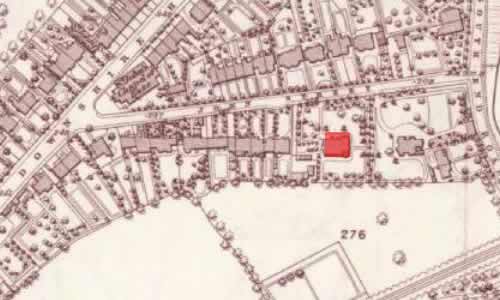25 December 1817: Keats’s Network, Influences, & Phases of Development
Wentworth Place, Hampstead


After spending Christmas Eve at the home of the Reynolds’ on Lamb’s Conduit Street, Keats spends Christmas Day evening with his friends, Charles Brown and Charles Wentworth Dilke. Socially, this is a very busy time for Keats—theatre-going, meeting with many friends, dining with some new acquaintances, going to an exhibition. He’s also working on a couple of theatre reviews that will be published very early in the new year.
On his way to Wentworth Place, Keats runs into the famous novelist and social philosopher
William Godwin. Godwin probably first hears of
Keats through Hunt, who circulates some of Keats’s
poetry at a dinner party back on 16 February 1817 that included Godwin, Godwin’s daughter, Mary (who goes on to write Frankenstein), and her husband, the radical, young poet Percy Shelley, as well as William Hazlitt, the literary critic. The poetry seems to have
impressed all, though in the air at that time was the very public Chancery case that
involved
custody of Shelley’s two children by his first wife, Harriet Westbrook, after her suicide at the end of 1816. Shelley lost the case—the
court considered his principles
unfit—and his two children were fostered out.
Keats and Shelley are forever joined via Hunt as potentially important poets (and today as canonical second-generation Romantic poets), but profound differences in their background, personality, life experience, and implicit rivalry keep the two at a coolish distance, though Shelley in his often enthusiastic assumptions might not have likely picked up on Keats’s reservations. Shelley’s often shrill nature is the counter of Keats’s sometimes inward disposition.

In short, since late 1816, Keats has become well ensconced into London’s liberal literary network of writers, poets, critics, artists, publishers, and literary lawyers, much of it revolving around connections initiating via Hunt.* No doubt such exposure, connections, and stimulation hugely propel and shape his poetic ambitions. For the sake of convenience, we can establish three phases in Keats’s work: 1) the publication of his first collection (Poems, 1817) marks Keats’s first phase, and there is very little quality poetry; 2) the completion of Endymion and its publication, as well as poetry written over 1817-1818, mark a second phase of development, but again there is remarkably little quality verse (except toward the very end of 1818); 3) the extraordinary leap in his poetry in 1819, culminating in his June 1820 collection, defines his third (and final stage). After 1819, Keats writes almost nothing; illness sets in. Perhaps the phases can be put more glibly by impersonating Keats: 1) I want to be a poet; 2) I am trying to be a poet; 3) I am a poet.
In terms of his poetic progress, by the end of 1817, Keats begins to sound a fairly
consistent poetics (expressed within his letters) that will both brace and sanction
the
direction of his poetry (especially see his letters to Bailey, 22 Nov; to George and Tom Keats, 21/27 Dec). A number of factors prompt
and determine his progress:* the deliberate study of poetry, and of Shakespeare and William Wordsworth in particular (he reads Shakespeare’s poetry at the
end of November, and earlier in the month we also find Keats asking the Dilkes to
get him a
copy of Samuel Taylor Coleridge’s substantial
collection of poetry, Sibylline Leaves); analyzing the acting
style of Edmund Kean; understanding the limitations
and deficiencies of his long trial
poem (Endymion) he just completes; discussing
poetry, art, and theatre with the likes of good friends like John Hamilton Reynolds, Benjamin Robert Haydon, Benjamin
Bailey, Joseph Severn as well as others
like Hunt, Percy Shelley, and Charles Brown;
perceiving the limitations of Hunt’s poetry, poetic posturing, and the limits of a
thoroughly
suburban sociability; articulating the necessity and qualities of intensity in art;
perceiving
the support he has from many of his friends; privileging beauty over all other artistic
outcomes; being influenced by the critical work of William Hazlitt, whom he comes to know fairly well; meeting Wordsworth, and
intimations of the philosophical depths of his poetry; coming to terms with his own
aspirations and desire for an independent poetic character—again, all these set Keats
toward
to the writing of his most accomplished poetry. It will be about another year for
this poetry
to actually materialize. Other factors that work toward his ultimate poetic progress
will
emerge over 1818. But for now, he has much to go on.
For a more complete survey of what might form Keats’s rapid poetic development, see the factors page.
*See here for a graph of Keats’s social network.

